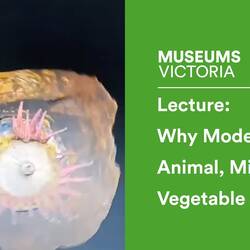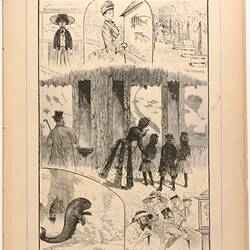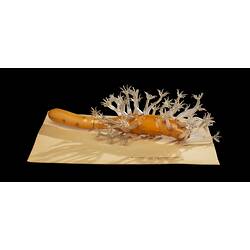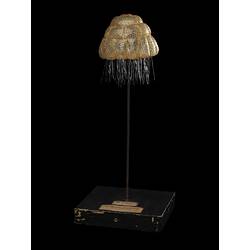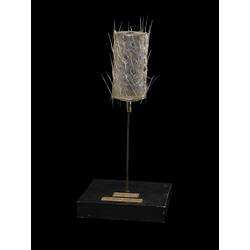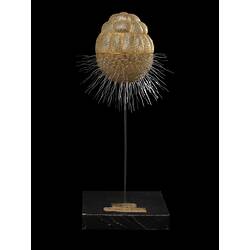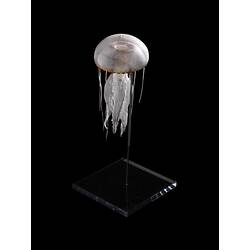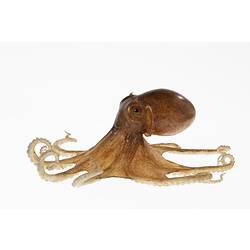Museum Victoria's Blaschka Model Collection consists of nine glass models of marine invertebrates. Four of these are a series showing developmental stages of a sponge.
The models were made by Leopold Blaschka (1822-1895) and his son, Rudolf (1857-1939), highly skilled glass artists based in Dresden, Germany. The Blaschkas are best known for their glass models of plants and marine invertebrates. They were passionate naturalists and based their models on observations and drawings made in the field and in their own purpose-built seawater aquariums. They also referred to the work of other naturalists, many of whom they corresponded with. Their painstaking work produced incredibly detailed and scientifically accurate models that still astonish scientists and artists today. The Blaschkas kept their techniques secret and many of the skills used to produce the models were lost with Rudolf's death in 1939.
The Blaschkas' glass models were bought by universities and museums for teaching, education and display. The Blaschkas were working during a period when many new museums were opening and natural history displays were starting to become what audiences today would recognises as scientific. Preserving vertebrate specimens for display in these new museums was relatively easy but soft-bodied invertebrates were, and still are, difficult to preserve without losing their colour and shape. This made them less attractive for display and less useful for showing how they appeared when alive. Models were therefore often used to allow people to see what the live animals looked like. Glass models were unusual but allowed the extremely delicate structures of many invertebrates to be reproduced with great accuracy. The Blaschkas made only soft-bodied animals such as worms, molluscs and cnidarians; there are no Blaschka models of arthropods.
Exactly how the Museum acquired its collection of Blaschka models is not known. The Blaschka's models were sold across the world through a number of natural history suppliers. These included the American Henry Ward, whose 1888 catalogue listed 700 glass Blaschka models for order. The Museums' founder, Sir Frederick McCoy, regularly bought items from Ward and it is possible that he purchased the Museum's Blaschka models this way. It is also possible that the models were originally bought for the aquarium at the Royal Exhibition. In 1944 "glass models of the lower forms of marine life", which possibly refer to these models, were on display in the Melbourne Aquarium. Until it burned down in 1953, the aquarium was part of the Royal Exhibition Building.
More Information
-
Keywords
anatomical models, models, Models & Modelmaking, invertebrates
-
Authors
-
Article types


